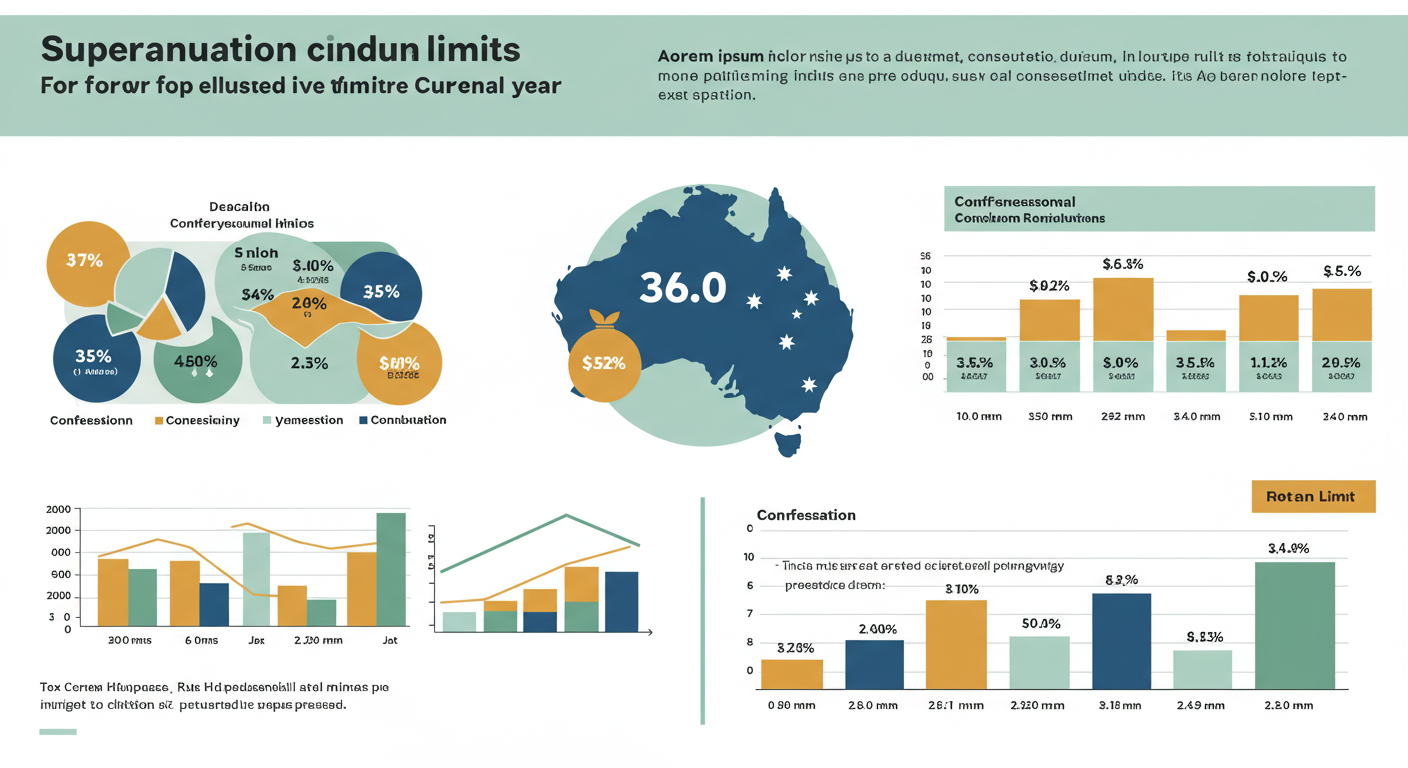Australians Are Making Thousands from This Legal Loophole
How Ordinary Australians Are Building Profitable Businesses Collecting Unpaid Court Debts – And Why Your Legal Win Could Still Pay Off
Source By Rebecca Chen, Chartered Financial Planner
When most Australians win a court case, they assume the battle is over. The judge has ruled in their favour, they have an official judgment in hand, and they expect to be paid. But here’s the shocking reality: winning in court is only half the battle.
What many don’t realise is that courts don’t automatically enforce their judgments. Once a judgment or money order has been filed and/or registered in the court, you (the ‘enforcement creditor’) can apply to the court to issue an enforcement warrant to recover the debt, according to Queensland Courts. But this process requires knowledge, persistence, and often significant time investment that most people simply don’t have.
This gap in the legal system has created an unexpected opportunity – a legitimate side hustle that’s helping Australians turn forgotten court judgments into real money.
The Scale of Australia’s Uncollected Judgment Problem
The numbers surrounding uncollected court debts in Australia are staggering, though exact statistics are difficult to obtain due to the fragmented nature of court systems across states and territories.
What we do know from available data is concerning:
- There was a total of 488,936 defendants across all Criminal Court levels in Australia in 2021–22, according to the Australian Bureau of Statistics
- Enforcement warrants are used to enforce a judgment or money order and recover monies awarded to creditors in the court, but many creditors never pursue this option
- Industry estimates suggest that only 35-40% of civil court judgments in Australia ever get fully collected
The enforcement process itself is well-established. The remedies available in each state and territory may vary, but generally the creditor may make an application to the court for enforcement. An enforcement warrant or order might involve: the seizure and sale of real and personal property owned by the debtor; garnishee orders against the debtor’s wages or salary; charging orders against the debtor’s stocks, shares, bonds, or debentures; the appointment of a receiver; or even committal of the debtor, according to legal professionals specialising in enforcement.

Meet Michael: From IT Professional to Judgment Collector
Michael Thompson’s journey into judgment collection began during the COVID-19 pandemic. As a Brisbane-based software engineer, he found himself in a rental dispute that escalated to the Queensland Civil and Administrative Tribunal (QCAT).
After winning a $6,800 judgment against his landlord for illegally withheld bond money and damages, Michael expected prompt payment. Instead, he encountered complete silence from the losing party.
“The landlord just ignored the QCAT order entirely,” Michael explains. “I had this official judgment saying they owed me nearly seven thousand dollars, but they acted like it didn’t exist.”
Rather than accepting defeat, Michael’s analytical background kicked in. He began researching judgment enforcement processes, discovering a complex but systematic approach to debt recovery that most Australians never learn about.
What started as personal necessity evolved into a legitimate business opportunity. Over three years, Michael has built a judgment collection operation generating $45,000 annually while working just 15 hours per week.
Understanding Australia’s Regulatory Framework
The debt collection industry in Australia operates under strict regulatory oversight. The ACCC and ASIC have jointly produced this guideline to assist creditors, collectors and debtors understand their rights and obligations. It helps make sure that debt collection activity is consistent with consumer protection laws.
This joint regulatory approach by the Australian Competition and Consumer Commission (ACCC) and Australian Securities and Investments Commission (ASIC) ensures professional standards while protecting debtor rights.
Key regulatory principles include:
- Fair dealing requirements: No harassment, threats, or deceptive practices
- Privacy compliance: Strict rules governing personal information use
- Proportionate enforcement: Collection methods must match debt circumstances
- Consumer protection: Special provisions for individual versus business debtors
State-level licensing requirements vary significantly. Queensland mandates debt collector licenses for anyone collecting on behalf of others, while other states focus more on professional standards than specific licensing.
The Business Model: How Judgment Collection Actually Works
Professional judgment collection operates on a straightforward assignment model:
Step 1: Assignment of Rights
The original creditor legally assigns their judgment to the collector. This transfers all enforcement rights while maintaining the original court order’s validity.
Step 2: Asset Investigation
Using professional databases and investigation techniques, collectors locate debtor assets that can satisfy the judgment. This includes:
- ASIC company searches for business debtors
- Property title searches across all states
- Personal Property Securities Register (PPSR) checks
- Bank account and employment verification
Step 3: Legal Enforcement
These warrants can only be issued after a court’s judgment or order has been filed. Professional collectors apply various enforcement mechanisms:
- Garnishment orders against wages or bank accounts
- Charging orders against real estate
- Seizure warrants for valuable personal property
- Examination summons requiring debtors to declare assets under oath
Step 4: Revenue Sharing
Successful collections typically split 50/50 between the original creditor and the collector, though percentages can vary based on case complexity and debt age.
Case Study: The Corporate Insolvency Recovery
One of Michael’s most successful cases involved a local gym owed $12,400 by a corporate client for personal training services. The company claimed insolvency and ceased operations after losing in magistrates court.
“The gym owner had completely given up,” Michael recalls. “They assumed corporate insolvency meant game over.”
However, Michael’s investigation revealed:
- Directors had immediately started a new company in the same industry
- One director owned an investment property worth $850,000
- New company bank accounts contained substantial funds
Through targeted enforcement actions including garnishment orders and property charging orders, Michael recovered $9,800 over eight months. The gym owner received $4,900, while Michael earned $4,900 in fees.
The Professional Toolkit: Technology and Resources
Modern judgment collection relies heavily on technology and professional databases unavailable to typical consumers:
Investigation Platforms
- ASIC Connect: Company director searches and business relationship mapping
- PPSR Database: Secured asset identification including vehicles and equipment
- State Land Title Offices: Real estate ownership verification across Australia
- Credit Bureau Access: Financial profile analysis where legally permitted
Case Management Systems
Professional collectors use specialized software for:
- Multi-case tracking and deadline management
- Automated debtor asset monitoring
- Client communication and progress reporting
- Financial management and fee calculation
Legal Filing Systems
Electronic court systems enable efficient:
- Enforcement warrant applications
- Garnishment order submissions
- Interstate enforcement coordination
- Compliance documentation
Success Metrics: What Makes Judgments Collectible
Not every unpaid judgment represents a viable collection opportunity. Michael has developed specific criteria for case evaluation:
High-Success Probability Indicators
- Active Businesses: Trading companies with ongoing revenue streams
- Property Owners: Real estate holdings provide enforcement security
- Government Contractors: Regular income from public sector contracts
- Professional License Holders: Reputation concerns motivate payment
Red Flag Situations
- Recent bankruptcy declarations
- Genuine financial hardship circumstances
- Judgments over ten years old (varies by state)
- Previous failed professional collection attempts
- No traceable assets despite thorough investigation
“I turn down about 60% of cases people bring me,” Michael admits. “If someone’s genuinely experiencing hardship, pursuing them isn’t ethical or profitable. But when people are hiding assets or simply ignoring court orders, that’s different.”
The Economics: Building Sustainable Income
Michael’s financial progression over three years demonstrates the business model’s viability:
Year 1: Learning Phase ($8,400 revenue)
- 6 cases attempted, 4 successful collections
- Focus on local Queensland judgments under $10,000
- Heavy time investment in skills development
- Basic technology setup and legal consultation
Year 2: Scaling Operations ($23,600 revenue)
- 15 cases across Queensland and NSW
- Developed interstate enforcement relationships
- Systematic case evaluation processes
- Specialized in business judgment collection
Year 3: Professional Service ($45,000 revenue)
- 28 cases with 68% success rate
- Expanded to Victoria and South Australia
- Part-time administrative support hired
- Established referral network with legal professionals
Startup Investment Requirements
- Professional indemnity insurance: $3,600 annually
- Database and software subscriptions: $2,400 annually
- Legal setup and consultation: $4,800 initial
- Marketing and professional development: $1,200 annually
- Total first-year investment: approximately $12,000
Ongoing Operating Costs
- Monthly software subscriptions: $200
- Court filing fees: $150-600 per case
- Asset investigation costs: $50-300 per case
- Professional development: $1,800 annually
Ethical Considerations and Industry Standards
Professional judgment collection requires careful ethical navigation. The industry has evolved significantly toward higher standards, partly due to regulatory pressure and professional association influence.
Ethical Guidelines
- Hardship Assessment: Careful evaluation of debtor circumstances before pursuing collection
- Proportionate Action: Enforcement methods must match debt size and debtor capacity
- Transparent Communication: Clear, honest communication with both clients and debtors
- Professional Conduct: Maintaining industry reputation through ethical behaviour
Industry Professional Development
Several educational pathways support professional development:
- Certificate IV in Debt Recovery through various registered training organisations
- Australian Collection and Debt Buyers Association (ACDBA) training programs
- Legal studies focusing on commercial and civil procedure law
- Professional conferences and continuous education requirements
Technology Disruption and Future Opportunities
The judgment collection industry is experiencing significant technological advancement:
Artificial Intelligence Applications
- Automated asset discovery through comprehensive data mining
- Predictive modelling for collection success probability
- Pattern recognition for hidden asset identification
- Natural language processing for social media analysis
Digital Investigation Tools
- Advanced social media monitoring and analysis
- Employment verification through professional networking platforms
- Real-time asset monitoring and alert systems
- Cross-border enforcement coordination systems
Blockchain and Cryptocurrency
- Digital asset tracking and identification
- Cryptocurrency seizure and liquidation processes
- Smart contracts for automated payment distribution
- International enforcement coordination
“The technology available today versus just three years ago is remarkable,” Michael observes. “What previously required weeks of manual investigation can now be completed in hours.”
DIY Collection vs Professional Services
Many judgment holders wonder whether to attempt collection themselves or engage professionals. The decision depends on several factors:
DIY Collection Suitability
- Judgments under $5,000 (cost-effectiveness threshold)
- Local debtors with known asset locations
- Straightforward enforcement situations
- Creditors comfortable navigating legal processes
Professional Service Indicators
- Complex business debts with hidden assets
- Interstate or international enforcement requirements
- High-value judgments justifying professional fees
- Situations requiring specialized legal knowledge
Cost-Benefit Analysis
| Collection Method | Typical Costs | Time Investment | Success Rate |
|---|---|---|---|
| DIY Enforcement | $500-1,500 | 40-80 hours | 25-35% |
| Professional Service | 40-50% of recovered amount | Minimal client time | 45-65% |
State-by-State Enforcement Variations
Australian judgment enforcement operates under different rules across jurisdictions:
Queensland
- 12-year enforcement period with renewal options
- QCAT judgments enforceable as magistrates court orders
- Professional licensing required for commercial collectors
- Interstate enforcement through national coordination protocols
New South Wales
- 12-year limitation period for judgment enforcement
- Examination notices compel debtor asset disclosure
- Garnishment available on wages up to specific limits
- Property seizure requires minimum judgment values
Victoria
- 15-year enforcement period for court judgments
- Electronic enforcement options through court systems
- Instalment orders enable structured payment plans
- Strong debtor protection for essential assets
Western Australia
- 12-year limitation for money judgment enforcement
- Attachment of earnings orders for employed debtors
- Professional licensing requirements for commercial collection
- Real estate charging orders common enforcement method
The Tradie’s Victory
A Brisbane electrician owed $18,500 for commercial electrical work thought his money was lost when the client company claimed insolvency. Michael’s investigation revealed directors had transferred assets to family members before the insolvency declaration. Through examination summons and asset tracing, he recovered $14,200 over 14 months. The electrician received $7,100 – money he never expected to see.
The Interstate Property Recovery
A Sydney landlord held an $8,900 NCAT judgment against a tenant who relocated to Perth and ignored all contact. Using Western Australia’s enforcement procedures, Michael garnished wages at the debtor’s new employment, securing full payment plus costs within four months. Cross-border expertise made the crucial difference.
The Cryptocurrency Surprise
A Gold Coast business owner was owed $22,400 from a technology contractor who appeared to have no traditional assets. Michael’s blockchain analysis revealed substantial cryptocurrency holdings. After threatening seizure proceedings, they negotiated a $15,600 settlement. This case highlighted emerging enforcement opportunities in digital assets.

Getting Started: A Practical Roadmap
For Australians considering judgment collection as a business opportunity:
Phase 1: Education and Research (Weeks 1-8)
- Study state-specific enforcement laws thoroughly
- Complete relevant training courses in debt collection
- Research local market conditions and competition
- Network with legal professionals and potential referral sources
Phase 2: Business Setup (Weeks 9-16)
- Obtain required licenses and professional insurance
- Establish business structure and professional banking
- Invest in essential technology and database access
- Develop contracts and operational procedures
Phase 3: Market Entry (Months 4-8)
- Begin with smaller, local, straightforward cases
- Build systems and processes through practical experience
- Develop case studies and professional testimonials
- Establish ongoing referral relationships
Phase 4: Scaling Operations (Months 9-24)
- Expand across multiple jurisdictions systematically
- Develop specialized expertise in particular debt types
- Consider staff hiring for administrative support
- Build long-term business value and systems
For Current Judgment Holders: Your Next Steps
If you have an uncollected judgment gathering dust:
Immediate Actions
- Locate Documentation: Find original judgment and any previous collection attempts
- Check Enforcement Period: Ensure judgment hasn’t expired under state laws
- Conduct Basic Research: Internet searches and social media checks for debtor status
- Professional Consultation: Obtain free evaluations from licensed collectors
- Compare Options: Professional collection versus DIY versus write-off tax benefits
Evaluation Criteria
- Judgment Age: Fresher judgments typically have higher collection rates
- Debtor Type: Businesses and property owners show higher success rates
- Debt Size: Professional services become cost-effective above $8,000-10,000
- Asset Indicators: Visible assets suggest viable collection opportunities
- Previous Attempts: Failed DIY collection doesn’t preclude professional success
The Regulatory Future: Industry Evolution
The judgment collection industry continues evolving under increasing regulatory scrutiny. Recent developments include:
Enhanced Consumer Protection
- Stricter hardship assessment requirements
- Increased penalties for non-compliance
- Greater transparency in fee structures
- Enhanced debtor rights education
Technology Integration
- Electronic court filing systems across all jurisdictions
- Automated compliance monitoring and reporting
- AI-assisted asset discovery within privacy frameworks
- Blockchain-based enforcement coordination
Professional Standards
- Industry certification programs
- Mandatory continuing education requirements
- Professional association oversight expansion
- International best practice adoption
Michael’s success in judgment collection demonstrates how personal adversity can reveal genuine business opportunities. What began as frustration over an unpaid rental judgment evolved into a legitimate service helping fellow Australians recover money they’re legally owed.
The judgment collection industry addresses a real gap in Australia’s justice system. Courts can order payment, but enforcement requires specialized knowledge and persistent effort that most people lack. Professional collectors bridge this gap, using legal expertise and systematic processes to recover debts that would otherwise remain unpaid.
This isn’t get-rich-quick scheme territory. Building a successful judgment collection business requires significant education, professional investment, and ongoing compliance with complex regulations. However, for people with appropriate skills, temperament, and business acumen, it offers genuine income potential while providing valuable community service.
The next time someone mentions winning in court but never getting paid, remember there might still be hope – and potentially profit – in pursuing those forgotten judgments. The key is understanding that winning in court is just the beginning of the debt recovery process, not the end.
As Australia’s legal system continues evolving and technology advances, the judgment collection industry will likely become more sophisticated and accessible. For now, it remains a specialist field offering opportunities for those willing to invest in proper education and professional development.
About the Author: Rebecca Chen is a Chartered Financial Planner based in Sydney with 18 years of experience helping Australian families recover lost money and build wealth. She specializes in unclaimed money recovery and alternative income strategies.














